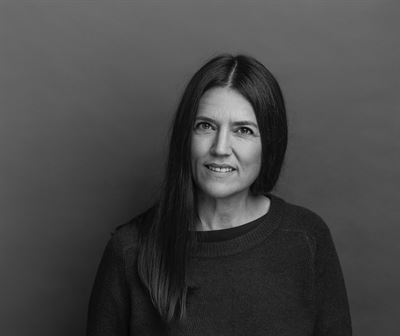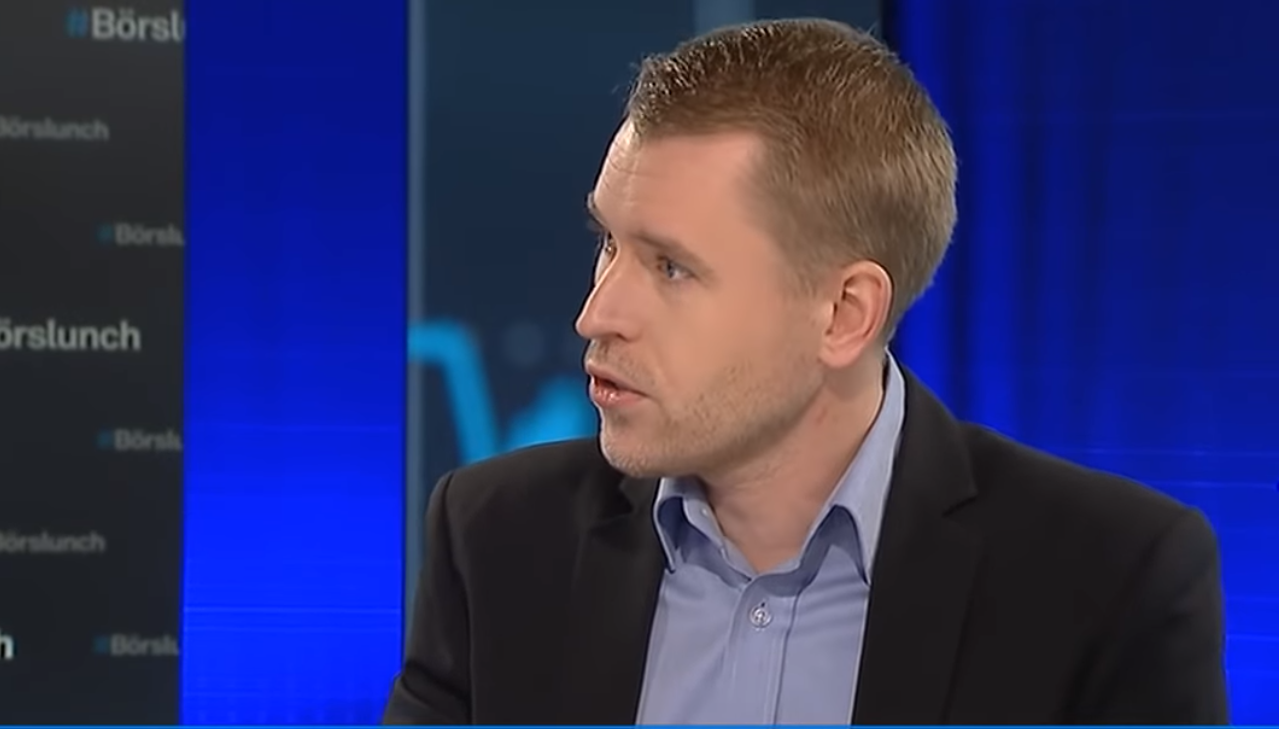Marknadsnyheter
Tagrisso with the addition of chemotherapy approved in the US for patients with EGFR-mutated advanced lung cancer
Approval based on FLAURA2 results which showed Tagrisso plus chemotherapy extended median progression-free survival by nearly 9 months vs. standard of care.
AstraZeneca’s Tagrisso (osimertinib) with the addition of chemotherapy has been approved in the US for the treatment of adult patients with locally advanced or metastatic epidermal growth factor receptor-mutated (EGFRm) non-small cell lung cancer (NSCLC).
The approval following a Priority Review by the Food and Drug Administration (FDA) was based on the results from the FLAURA2 Phase III trial published in The New England Journal of Medicine. Tagrisso with the addition of chemotherapy reduced the risk of disease progression or death by 38% compared to Tagrisso monotherapy which is the 1st-line global standard of care (hazard ratio [HR] 0.62; 95% confidence interval [CI] 0.49-0.79; p<0.0001). Median progression-free survival (PFS) by investigator assessment was 25.5 months for patients treated with Tagrisso plus chemotherapy, an 8.8-month improvement versus Tagrisso monotherapy (16.7 months).
PFS results from blinded independent central review (BICR) were consistent with the results by investigator assessment, showing 29.4 months median PFS with Tagrisso plus chemotherapy, a 9.5-month improvement over Tagrisso monotherapy (19.9 months) (HR 0.62; 95% CI 0.48-0.80; p=0.0002).
Each year in the US, there are over 200,000 people diagnosed with lung cancer, and 80-85% of these patients are diagnosed with NSCLC, the most common form of lung cancer.1-3 Approximately 70% of people are diagnosed with advanced NSCLC.4 Additionally, about 15% of NSCLC patients in the US have an EGFR mutation.5
Pasi A. Jänne, MD, PhD, medical oncologist at Dana-Farber Cancer Institute and principal investigator for the trial, said: “This approval based on the unprecedented data from FLAURA2 brings a critical new treatment option to patients with advanced EGFR-mutated non-small cell lung cancer. Now, with the choice of two highly effective osimertinib-based options, physicians can better tailor treatment to an individual’s needs and help ensure the best possible outcome for each patient.”
Dave Fredrickson, Executive Vice President, Oncology Business Unit, AstraZeneca, said: “This important new treatment option can delay disease progression by nearly nine additional months, establishing a new benchmark with the longest reported progression-free survival benefit in the 1st-line advanced setting. This approval reinforces Tagrisso as the backbone of EGFR-mutated lung cancer treatment either as monotherapy or in combination with chemotherapy. This news is especially important for those with a poorer prognosis, including patients whose cancer has spread to the brain and those with L858R mutations.”
Laurie Ambrose, President and CEO, GO2 for Lung Cancer, said: “We are so excited to see this continued progress advancing more personalized treatment options for our community. The more we can target the right treatments for the right people at the right time, the better outcomes will be for our community – a goal we all collectively share.”
Results from a prespecified exploratory analysis of patients in the FLAURA2 trial with brain metastases at baseline showed Tagrisso plus chemotherapy reduced the risk of central nervous system (CNS) disease progression or death by 42% compared to Tagrisso alone (HR 0.58; 95% CI 0.33-1.01) as assessed by BICR. With two years of follow up, 74% of patients treated with Tagrisso plus chemotherapy had not experienced CNS disease progression or death versus 54% of patients treated with Tagrisso monotherapy.
While the overall survival (OS) results remained immature at the second interim analysis (41% maturity), no trend towards a detriment was observed (HR 0.75; 95% CI 0.57-0.97). The trial continues to assess OS as a key secondary endpoint.
The safety profile of Tagrisso with the addition of chemotherapy was generally manageable and consistent with the established profiles of the individual medicines. Adverse event (AE) rates were higher in the Tagrisso plus chemotherapy arm, driven by well-characterised chemotherapy-related AEs. Discontinuation rates for Tagrisso due to AEs were low in both arms of the trial (11% for Tagrisso plus chemotherapy and 6% for monotherapy).
In December 2023, osimertinib (Tagrisso) with the addition of chemotherapy was added to the NCCN Clinical Practical Guidelines in Oncology (NCCN Guidelines®) as a NCCN Category 1 Other Recommended regimen for patients with NSCLC whose tumours have EGFR exon 19 deletion or exon 21 L858R mutations based on the data from FLAURA2.6
The US regulatory submission was reviewed under Project Orbis, which provides a framework for concurrent submission and review of oncology medicines among participating international partners. As part of Project Orbis, Tagrisso in combination with chemotherapy is also under review by regulatory authorities in Australia, Canada, and Switzerland. Regulatory applications are also under review in several other countries based on the FLAURA2 results.
Tagrisso is approved as monotherapy in more than 100 countries including in the US, EU, China and Japan. Approved indications include for 1st-line treatment of patients with locally advanced or metastatic EGFRm NSCLC, locally advanced or metastatic EGFR T790M mutation-positive NSCLC, and adjuvant treatment of early-stage EGFRm NSCLC.
As part of AstraZeneca’s ongoing commitment to treating patients as early as possible in lung cancer, Tagrisso is also being investigated in the neoadjuvant setting in the NeoADAURA Phase III trial with results expected later this year, and in the early-stage adjuvant resectable setting in the ADAURA2 Phase III trial.
Notes
Lung cancer
Lung cancer is the leading cause of cancer death among both men and women, accounting for about one-fifth of all cancer deaths.7 Lung cancer is broadly split into NSCLC and small cell lung cancer.2 The majority of all NSCLC patients are diagnosed with advanced disease.4
Patients with EGFRm NSCLC are particularly sensitive to treatment with an EGFR-tyrosine kinase inhibitor (EGFR-TKI) which blocks the cell-signalling pathways that drive the growth of tumour cells.8
FLAURA2
FLAURA2 is a randomised, open-label, multi-centre, global Phase III trial in the 1st-line treatment of patients with locally advanced (Stage IIIB-IIIC) or metastatic (Stage IV) EGFRm NSCLC. Patients were treated with Tagrisso 80mg once daily oral tablets with the addition of chemotherapy (pemetrexed (500mg/m2) plus cisplatin (75mg/m2) or carboplatin (AUC5)) every three weeks for four cycles, followed by Tagrisso with pemetrexed maintenance every three weeks.
The trial enrolled 557 patients in more than 150 centres across more than 20 countries, including in the US, Europe, South America and Asia. The primary endpoint is PFS. The trial is ongoing and will continue to assess the secondary endpoint of OS.
Tagrisso
Tagrisso (osimertinib) is a third-generation, irreversible EGFR-TKI with proven clinical activity in NSCLC, including against CNS metastases. Tagrisso (40mg and 80mg once-daily oral tablets) has been used to treat more than 800,000 patients across its indications worldwide and AstraZeneca continues to explore Tagrisso as a treatment for patients across multiple stages of EGFRm NSCLC.
There is an extensive body of evidence supporting the use of Tagrisso in EGFRm NSCLC. Tagrisso is the only targeted therapy to improve patient outcomes in both early-stage disease in the ADAURA Phase III trial and late-stage disease in the FLAURA Phase III trial and FLAURA2 Phase III trial.
The Company is also researching ways to address tumour mechanisms of resistance through the SAVANNAH and ORCHARD Phase II trials, and the SAFFRON Phase III trial, which test Tagrisso plus savolitinib, an oral, potent and highly selective MET TKI, as well as other potential new medicines.
AstraZeneca in lung cancer
AstraZeneca is working to bring patients with lung cancer closer to cure through the detection and treatment of early-stage disease, while also pushing the boundaries of science to improve outcomes in the resistant and advanced settings. By defining new therapeutic targets and investigating innovative approaches, the Company aims to match medicines to the patients who can benefit most.
The Company’s comprehensive portfolio includes leading lung cancer medicines and the next wave of innovations, including Tagrisso and Iressa (gefitinib); Imfinzi (durvalumab) and Imjudo (tremelimumab); Enhertu (trastuzumab deruxtecan) and datopotamab deruxtecan in collaboration with Daiichi Sankyo; Orpathys (savolitinib) in collaboration with HUTCHMED; as well as a pipeline of potential new medicines and combinations across diverse mechanisms of action.
AstraZeneca is a founding member of the Lung Ambition Alliance, a global coalition working to accelerate innovation and deliver meaningful improvements for people with lung cancer, including and beyond treatment.
AstraZeneca in oncology
AstraZeneca is leading a revolution in oncology with the ambition to provide cures for cancer in every form, following the science to understand cancer and all its complexities to discover, develop and deliver life-changing medicines to patients.
The Company’s focus is on some of the most challenging cancers. It is through persistent innovation that AstraZeneca has built one of the most diverse portfolios and pipelines in the industry, with the potential to catalyse changes in the practice of medicine and transform the patient experience.
AstraZeneca has the vision to redefine cancer care and, one day, eliminate cancer as a cause of death.
AstraZeneca
AstraZeneca (LSE/STO/Nasdaq: AZN) is a global, science-led biopharmaceutical company that focuses on the discovery, development, and commercialisation of prescription medicines in Oncology, Rare Diseases, and BioPharmaceuticals, including Cardiovascular, Renal & Metabolism, and Respiratory & Immunology. Based in Cambridge, UK, AstraZeneca operates in over 100 countries and its innovative medicines are used by millions of patients worldwide. Please visit astrazeneca.com and follow the Company on social media @AstraZeneca.
Contacts
For details on how to contact the Investor Relations Team, please click here. For Media contacts, click here.
References
- ASCO. Lung Cancer – Non-Small Cell: Introduction. Available at: https://www.cancer.net/cancer-types/lung-cancer-non-small-cell/types-treatment. Accessed February 2024.
- LUNGevity Foundation. Types of Lung Cancer. Available at: https://lungevity.org/for-patients-caregivers/lung-cancer-101/types-of-lung-cancer. Accessed February 2024.
- American Cancer Society. What Is Lung Cancer? Available at: https://www.cancer.org/cancer/lung-cancer/about/what-is.html#:~:text=About%2080%25%20to%2085%25%20of,(outlook)%20are%20often%20similar. Accessed February 2024.
- Cagle PT, et al. Lung Cancer Biomarkers: Present Status and Future Developments. Archives Pathology Lab Med. 2013;137:1191-1198.
- Keedy VL, et al. American Society of Clinical Oncology Provisional Clinical Opinion: Epidermal Growth Factor Receptor (EGFR) Mutation Testing for Patients with Advanced Non-Small-Cell Lung Cancer Considering First-Line EGFR Tyrosine Kinase Inhibitor Therapy. J Clin Oncol. 2011:29;2121-27.
- NCCN, National Comprehensive Cancer Network® (NCCN®). Referenced with permission from the NCCN Clinical Practice Guidelines in Oncology (NCCN Guidelines®) for Non-Small Cell Lung Cancer Version 1.2024.© National Comprehensive Cancer Network, Inc. [2024]. All rights reserved. Accessed [February 14, 2024]. To view the most recent and complete version of the guideline, go online to NCCN.org. NCCN makes no warranties of any kind whatsoever regarding their content, use or application and disclaims any responsibility for their application or use in any way.
- World Health Organisation. International Agency for Research on Cancer. Lung Fact Sheet. Available at: https://gco.iarc.fr/today/data/factsheets/cancers/15-Lung-fact-sheet.pdf. Accessed February 2024.
- Cross DA, et al. AZD9291, an Irreversible EGFR TKI, Overcomes T790M-Mediated Resistance to EGFR Inhibitors in Lung Cancer. Cancer Discov. 2014;4(9):1046-1061.
Marknadsnyheter
Regeringen föreslår lättnader i byggkraven för studentbostäder
Regeringen har beslutat om en lagrådsremiss med förslag till lättnader i byggkraven för studentbostäder. Syftet är att öka möjligheterna till flexibilitet vid byggandet.
– På många studieorter är det svårt för studenter att hitta boende. Därför behöver byggregelverket förenklas. Syftet är att möjliggöra för fler studentbostäder genom sänkta byggkostnader och ökad flexibilitet, säger infrastruktur- och bostadsminister Andreas Carlson.
Förslaget innebär att det blir möjligt att göra undantag från kraven på tillgänglighet och användbarhet i en byggnad som innehåller studentbostäder. Undantagen ska kunna tillämpas vid både nyproduktion och vid ändring av en byggnad.
Det ska vara möjligt att göra undantag för högst 80 procent av studentbostäderna i ett byggprojekt. Minst 20 procent av studentbostäderna ska fortfarande uppfylla gällande krav på tillgänglighet och användbarhet för personer med nedsatt rörelse- eller orienteringsförmåga.
Lagändringen ger större flexibilitet vid byggande av studentbostäder och skapar fler tänkbara sätt att utforma planlösningar. Till exempel kan bostadsytan minskas och fler bostäder rymmas inom en given yta.
De föreslagna undantagen ska inte hindra personer med funktionsnedsättning att vara delaktiga i sociala sammanhang. En studentbostad som omfattas av undantagen ska kunna besökas av en person med nedsatt rörelse- eller orienteringsförmåga.
Regeringen breddar också definitionen av studentbostäder till att inkludera all vuxenutbildning för att göra det möjligt för fler kommuner att erbjuda studentbostäder.
Förslagen föreslås träda i kraft den 1 juli 2025.
Lagrådsremissen: Lättnader i byggkraven för studentbostäder – Regeringen.se
Presskontakt
Ebba Gustavsson
Pressekreterare hos infrastruktur- och bostadsminister Andreas Carlson
Telefon (växel) 08-405 10 00
Mobil 076-12 70 488
ebba.gustavsson@regeringskansliet.se
Marknadsnyheter
“Vi behöver tillsammans enas om vettiga avtal, som sätter standard för branschen”


Sveriges Radios Kulturnytt gör just nu en mycket välkommen granskning av villkoren i musikbranschen. Igår lyftes artisten Siw Malmkvists situation med ett avtal som inte förnyats på över 60 år. Hennes situation är tyvärr långt ifrån unik. Musikerförbundet har länge uppmärksammat att majorbolagen fortsätter att betala extremt låga royaltynivåer till artister vars kontrakt skrevs på 1960-talet – en tid då digital streaming inte existerade.
– Jag kan intyga att artisterna som talar ut i P1 är långt ifrån ensamma om sin situation och vi uppmanar deras artistkollegor att gå ut med sitt tydliga stöd till de som vågar bryta tystnaden om oskäliga ersättningar, säger Musikerförbundets ordförande Karin Inde.
Musiker och artister skapar det värde som skivbolagen tjänar pengar på, men ändå ser vi gång på gång hur bolagen behåller stora delar av intäkterna. Att en av Sveriges mest folkkära artister, med en karriär som sträcker sig över decennier, fortfarande har en oskälig royalty är ett tydligt bevis på branschens obalans.
– Tystnadskulturen kring prissättning är enbart bra för bolagen. Både artister och musiker skulle verkligen tjäna på att dela med sig till varandra om hur betalningar och dealar verkligen ser ut. Förstås i trygga, egna rum. Det är bara bolagen som tjänar på att vi inte pratar med varandra om pengar, säger Karin Inde.
Stort tack till de modiga artister som ser till att lyfta problematiken! För att vi ska få till en i grunden mer rättvis musikbransch behöver de stora parterna i sammanhanget – skivbolagen, musikerna och artisterna – göra som de flesta andra svenska branscher lyckas med:
– Vi behöver tillsammans enas om vettiga och balanserade avtal, som sätter standard för branschen. Musikerförbundet är redo att göra vår del i arbetet för bättre villkor i musikbranschen, frågan är om skivbolagen är redo, säger Karin Inde.
Karin Inde
Förbundsordförande
karin.inde@musikerforbundet.se
+46 (0)704447228
Musikerförbundet är fackförbundet för professionella musiker och artister. Vi arbetar för förbättrade upphovsrättsliga och arbetsrättsliga villkor och för att våra medlemmar ska få en rättvis del av de värden de skapar i samhället.
Marknadsnyheter
Bönor från egen kaffeskog, sump till jord – Viking Lines nya kaffe gör gott på många olika sätt


Viking Lines resenärer dricker varje år 8,5 miljoner koppar kaffe. Nu satsar rederiet på ett helt nytt kaffe som ger minskade klimatutsläpp och bättre levnadsvillkor för odlarna. Kaffet från Slow Forest odlas på rederiets egen odling i Laos utan kemiska gödningsmedel, handplockas och rostas därefter i Danmark.
Allt kaffe som serveras på Viking Lines fartyg är nu hållbart producerat Slow Forest-kaffe, odlat på rederiets 75 hektar stora odling på högplatåerna i Laos och rostat i Danmark. Kaffeplantorna odlas bland träd på återbeskogad mark, i stället för på traditionellt skövlade plantager. Viking Lines odling ligger i en kolsänka där målsättningen är att plantera 30 000 träd, vilket innebär nästan 400 träd per hektar. Kaffeskogen förbättrar också den lokala biologiska mångfalden i området.
Odlingen, bearbetningen och rostningen av kaffet hanteras av Slow Forest Coffee. För företaget är det viktigt att produktionskedjan är rättvis och transparent. Utöver miljöfördelarna erbjuder Slow Forest bättre lönevillkor och sjukersättning för byns odlare.
”Den traditionella kaffetillverkningens koldioxidavtryck är stort och merparten av intäkterna går till Europa i stället för produktionsländerna. Vi ville göra annorlunda. Våra kunder vill göra hållbara val, och nu kan de njuta av sitt kaffe med bättre samvete än någonsin tidigare,” berättar Viking Lines restaurangchef Janne Lindholm.
Bönorna till Slow Forest-kaffet får sakta mogna i skuggan av träden, utan kemiska gödningsmedel. De plockas också för hand, vilket avsevärt förbättrar kaffets kvalitet och smak. Viking Lines nya kaffe består till 100 procent av Arabica-bönor, med en balanserad syrlighet samt smak av nötter och choklad. Rostningsprofilen har skapats av den världsberömda danska rostningsmästaren Michael de Renouard.
”Vi valde en mörkrost till fartygets kaffe, vilket passar både finländarnas och svenskarnas nuvarande smakpreferenser gällande rostning. Finländarnas smak gällande kaffe har under de senaste åren utvecklats mot en mörkare rostning. Innan vi gjorde vårt slutgiltiga val testades det nya kaffet i Viking Cinderellas bufférestaurang och personalmässen – och båda testgrupperna gav toppbetyg. Då 8,5 miljoner koppar kaffe bryggs varje år kan inget lämnas åt slumpen!” säger Janne Lindholm.
Viking Lines hållbarhetsmål stannar inte vid produktionskedjan. Kaffesump från fartygen återvinns nämligen som råmaterial för trädgårdsjord. Detta minskar avsevärt användningen av jungfrulig torv vid tillverkningen av mylla.
”Vi har som mål att allt som tagits ombord på fartygen som är möjligt att återvinna ska återanvändas eller återvinnas. Det gäller inte bara kaffet utan även matavfall och till exempel textilier som tas ur bruk. Ett bra exempel på vårt livscykeltänkande är att frityrolja från fartygets restauranger blir till biobränsle för den finska sjöfartsindustrin,” säger Viking Lines hållbarhetschef Dani Lindberg.
Slow Forest Coffee – 5 fakta:
- Slow Forest Coffee är ett kaffeföretag som verkar i Laos, Vietnam och Indonesien i samarbete med över 500 lokala kaffeodlare.
- Företaget grundades år 2019 av Pinja Puustjärvi, driven av en vilja att skydda skogarna i Laos och stötta lokala odlare. Puustjärvi bodde som barn i Laos på grund av sin fars arbete.
- Kaffet odlas i restaurerade kaffeskogar, som binder stora mängder kol och ökar den biologiska mångfalden.
- Det är viktigt för företaget att produktionskedjan är ansvarsfull och transparent, samt att verksamheten gynnar både miljön och de lokala samhällena.
- Slow Forest Coffee betalar odlarna bättre ersättning än genomsnittet i Laos och erbjuder förmåner som underlättar deras liv: förskottsbetalningar, utbildning och möjligheten att låna pengar från en krisfond.
Mera infomation om Slow Forest Coffee här
Tilläggsinformation:
Janne Lindholm, restaurangchef
janne.lindholm@vikingline.com, tel. +358 400 744 806
Dani Lindberg, hållbarhetschef
dani.lindberg@vikingline.com, tel. +358 18 27 000
Johanna Boijer-Svahnström, informationsdirektör
johanna.boijer@vikingline.com, tel. +358 18 270 00
Christa Grönlund, informationschef
christa.gronlund@vikingline.com, tel. +358 9 123 51
-
Analys från DailyFX9 år ago
EUR/USD Flirts with Monthly Close Under 30 Year Trendline
-

 Marknadsnyheter2 år ago
Marknadsnyheter2 år agoUpptäck de bästa verktygen för att analysera Bitcoin!
-
Marknadsnyheter5 år ago
BrainCool AB (publ): erhåller bidrag (grant) om 0,9 MSEK från Vinnova för bolagets projekt inom behandling av covid-19 patienter med hög feber
-
Analys från DailyFX12 år ago
Japanese Yen Breakout or Fakeout? ZAR/JPY May Provide the Answer
-

 Marknadsnyheter2 år ago
Marknadsnyheter2 år agoDärför föredrar svenska spelare att spela via mobiltelefonen
-
Analys från DailyFX12 år ago
Price & Time: Key Levels to Watch in the Aftermath of NFP
-
Analys från DailyFX8 år ago
Gold Prices Falter at Resistance: Is the Bullish Run Finished?
-

 Nyheter6 år ago
Nyheter6 år agoTeknisk analys med Martin Hallström och Nils Brobacke

